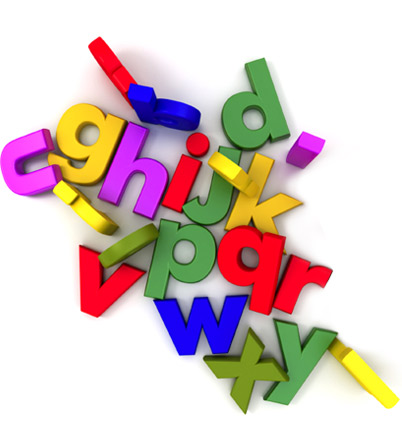Gold Coast Dyslexia & Dysgraphia Clinic
Dyslexia is a problem with the word-reading networks in the brain. Dyslexia literally means poor (dys) with words (lexia). The individual with dyslexia has difficulty reading the words on the page; it is not a problem with comprehension. The weakness in word-reading is most notable when reading words in isolation. People with dyslexia often read better in context because they are able to use other skills and information to make up for weaknesses in word-reading. Ironically, this contextual facilitation effect means that many bright children with dyslexia remain unidentified because most reading tests conducted in schools use stories.
Dysgraphia is a problem or a set of problems within the spelling system.
The dysgraphic may have a message to send, be able to turn the message into language and the language into speech. However, s/he will have difficulty turning the speech into printed words. In addition, the extra effort that has to go into spelling increases the cognitive load/effort when writing. The extra effort means that s/he has less mental energy to apply to the quality of the story content, story structure and editing processes. It also affects the amount of reinforcement s/he obtains from the task of writing for communication purposes, making thje dysgraphic vulnerable to doing less practice.

A brief history of dyslexia and dysgraphia
The majority of children learn to read and spell easily while others experience great difficulty. The nature and causes of these difficulties have been the focus of attention since the 19th Century British doctor W. Pringle Morgan wrote about Percy, a 14-year old student who was bright and achieving typically in other subjects, but who had a severe reading disability. Pringle Morgan could find no physical evidence for this weakness and therefore proposed a difficulty in storing visual representations of words as the cause. The Scottish ophthalmologist James Hinshelwood held a similar view of specific reading disability, for which he coined the term “congenital word blindness”.
The idea that problems with reading were somehow visual in nature influenced the neurologist Samuel T. Orton who, in 1925, published a monograph that still influences public (but not academic) thinking about reading difficulties to this day. Orton introduced the term “strephosymbolia” (twisted symbols) to describe what he believed to be a perceptual disorder in which the individual tended to perceive visual symbols as reversed images (e.g., the classic b as d or was as saw). The resulting errors were believed to be of visual perception along with letter orientation and letter sequencing errors in reading and writing.
Although interest in visual theories of dyslexia remains these early ideas of reading difficulties being due to primary vision (word blindness) or visual perceptual (strephosymbolia) impairments are almost certainly false. In a series of studies in the 1970s, Frank Vellutino and his colleagues compared the performance of dyslexic and normal readers on various tasks measuring visual memory, spatial orientation, and visual sequencing (e.g., b, d, p, q, was, saw, loin, lion). They found that there was no difference between the groups when the tasks required a written as opposed to a verbal response, which suggested that the problems in the group with dyslexia were related to verbal rather than visual functions.
Perhaps the most convincing evidence from these studies was that the groups with dyslexia made no more ‘visual’ errors than the good readers when the letters and words were taken from the Hebrew language which was foreign to both groups. Thus, the problem faced by individuals with dyslexia is likely to be verbal in nature, not visual, and the ‘visual’ errors they make are due to lack of familiarity with the written language rather than to “word blindness” or visual perceptual problems.


